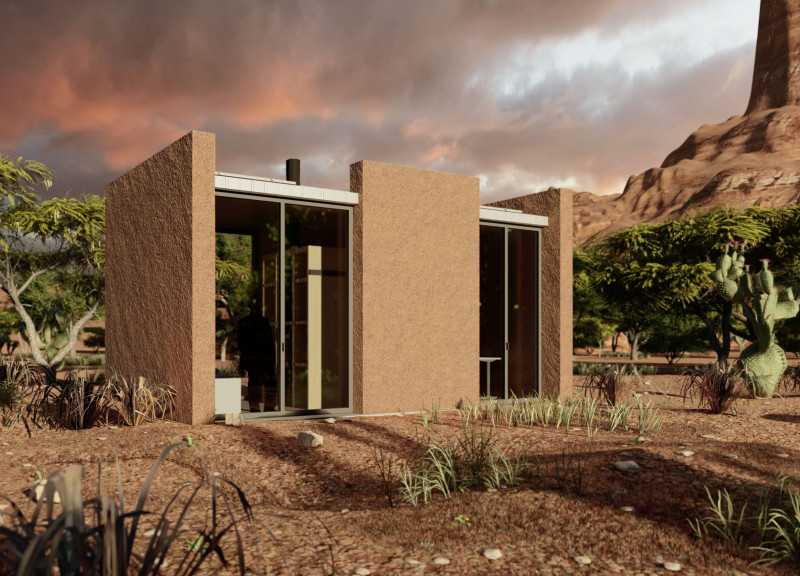5 key facts about this project
The design centers around a free plan concept with a central nucleus that plays a crucial role in meeting the functional needs of a home. Located in an environment that values sustainable living, the layout offers two spacious zones that maintain privacy and usability for various activities. This thoughtful organization avoids the need for extra walls, allowing for a more open and inviting atmosphere.
Central Nucleus
The nucleus serves two primary functions. One side is dedicated to a kitchen that also acts as a dining area and workspace. The other side features a high-efficiency fireplace, which caters to the living room and bedroom. This arrangement maximizes the use of space while still allowing for social interaction among residents, making daily life more comfortable.
Air Circulation and Comfort
Attention to air circulation significantly contributes to the design's comfort. The nucleus is intentionally lower than the adjoining ceiling, creating a flow of fresh air throughout the home and improving fireplace performance. This detail shows a clear understanding of thermal dynamics, enhancing energy efficiency and overall livability.
Material Use
Prefabricated components and locally sourced earth form the foundation of this project. The use of rammed earth gives structural strength to areas designated for living and working. Walls made from rammed earth are carefully positioned to catch sunlight, which helps to warm the space naturally while maximizing daylight exposure.
Sustainable Features
The design incorporates a pre-fabricated cover that holds solar panels and includes a rainwater collection system. Such features emphasize a commitment to sustainability and efficient resource management. All walls connect securely to the foundation, which not only ensures stability but also contributes to the overall durability of the building.
The design ultimately reflects a practical approach to living. Every feature is carefully selected to enhance the experience of the residents, creating an environment that supports both functionality and a connection to the surrounding landscape.



















































